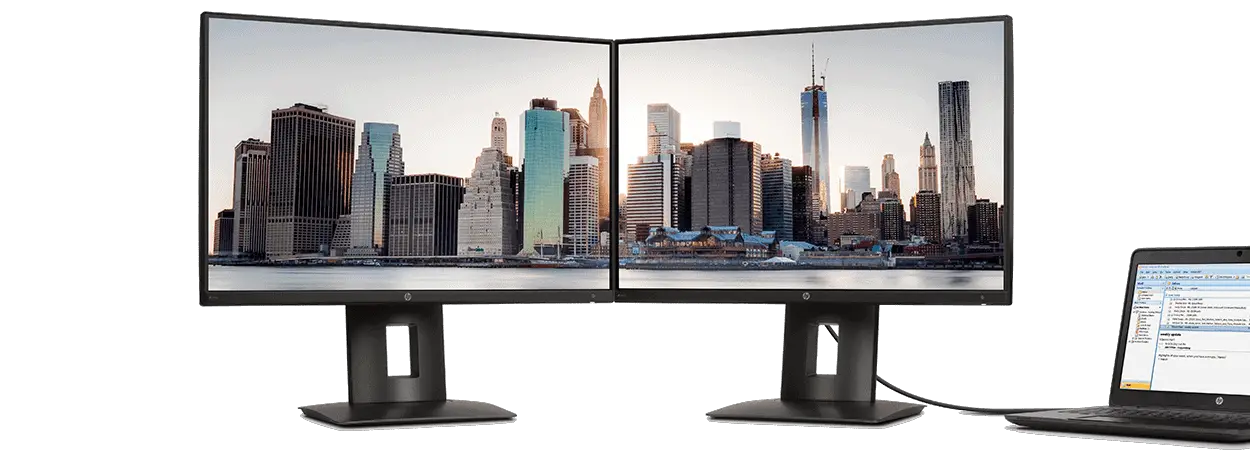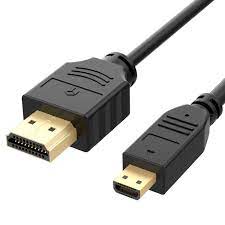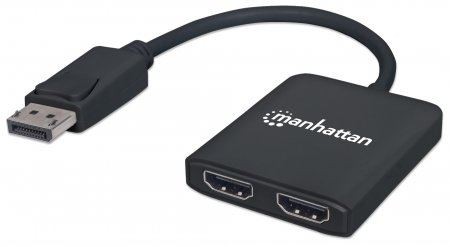HDMI splitters connect two or more monitors to a single HDMI output port. They are used for home and commercial entertainment, offices, and other professional settings. The HDMI splitter’s flexibility makes it an incredibly versatile option for connecting multiple displays.
Learn How to Change Mouse Direction on Dual Monitors in our article.

The technology behind these devices is pretty simple. An HDMI splitter takes an incoming signal from an HDMI source, such as a laptop, desktop computer, Blu-ray player, set-top box, etc., and divides it into two identical output signals. Each output signal is then sent to a separate monitor or display device for viewing.
Below is the HDMI cable:

Below is presented HDMI splitter:

An HDMI splitter can allow users to extend their main display on one monitor while simultaneously running applications or streaming video on another monitor connected through the same splitter. This gives users greater flexibility when multitasking with multiple displays and increases productivity in many scenarios.
Do HDMI Splitters Work For Dual Monitors?
Yes, you can use HDMI splitters for dual monitors. If you have two compatible screens that accept an HDMI input signal, you can use dual monitors with an HDMI splitter without problems. Modern computers and laptops have at least one HDMI port to connect external monitors, so this shouldn’t be an issue.
When using a splitter with dual, it shouldn’t be essential to ensure that both monitors are configured correctly to get the most out of them. For example, suppose one monitor is set to a higher resolution than the other monitor’s maximum resolution supports. You may experience monitor graphical anomalies when running videos or applications on both screens simultaneously through the splitter.
Additionally, some modern graphics cards may require each screen to be connected directly to its port for dual monitor support capabilities to work correctly; if this is not done properly, your results may vary significantly from what you initially intended when setting up your system with the splitter.
Aside from compatibility issues between hardware components and resolution settings issues, there are several benefits associated with utilizing HDMI splitters for dual monitors instead of buying extra dedicated video cards just for extending your main display onto additional screens: cost savings being one of them since splitters range from around $20-USD 50 depending on make/model; convenience being another since you can plug in any supported device into the existing RTX 3080 card instead of needing additional PCIe slots; lastly, power efficiency improvements since rather than running multiple GPU’s at once – only one will be utilized while still provGPU’s full access over all connected hardware components (dual 4K60hz).
In conclusion, using an HDMI Splitter can provide great value when connecting multiple monitors without sacrificing performance or spending excessive amounts of money on additional hardware components like other video cards or switching boxes; they will, however, require coordination between resolution settings and proper hardware configuration to get optimal usage out of them – but overall they should work without too much hassle provided everything is set up correctly first!

